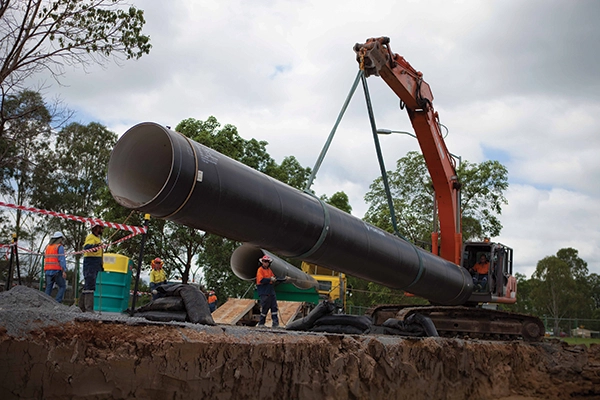The Australian Drinking Water Guidelines (ADWG) provides a framework for the management t of drinking water quality that includes a comprehensive outline of the process of water supply system analysis. In summary:
The drinking water supply system is defined as everything from the point of collection of water to the consumer and can include:
catchments, including groundwater systems;
source waters;
storage reservoirs and intakes;
treatment systems;
service reservoirs and distribution systems;
consumers.

Drinking water systems are dynamic and water supply systems can change, for example.
- Drought may result in loss (or reversal) of stream flows.
- Elevated water temperatures resulting in higher biological activity and increased chlorine demand.
- Higher temperatures may result in higher nutrient concentrations, leading to algae and cyanobacteria blooms.
- Decreased reservoir volume can lead to higher salinity, higher DOC, higher turbidity, increased animal and bird activity around reservoirs resulting in higher erosion, E.coli, pathogens.
- Decreased reservoir volume also leads to greater relative proportions from WWTP effluents in water sources, increased relative trace chemicals, possible temperature stratification and anoxic conditions.
- Floods will result in erosion leading to higher sediment loads and TOC while damaged pumps and potentially submerged WWTPs will have impacts on source waters, potentially increased turbidity and colour (organic and inorganic), increased pathogens, nutrients, DOC.
- Loss of vegetation from bushfires in a catchment results in higher erosion leading to sediment, OC and nutrient (P) mobilisation and damage to soils may result in slow recovery of vegetation and long-term impacts on source waters.
- Ash and silt runoff leads to increased DOC, colour, turbidity, nutrients, metals: increased aerobic metabolic activity leads to lower DO.
- Development of previously undeveloped land areas increased runoff, and potential for contaminants entering the waterway (hydrocarbons, metals).
- Increased abstraction rates due to increased or new demands (drought/urban development) can expand the cone of depression of local groundwater, drawing water from more distant sources that have untested groundwater quality.